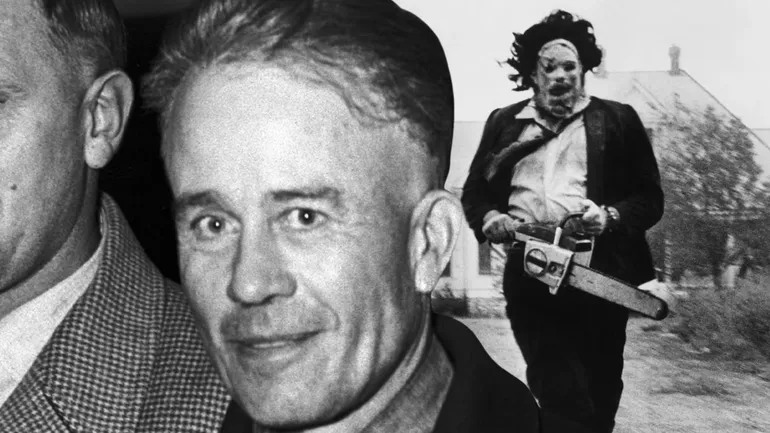Murders and unlawful activities have made Ed Gein one of America’s most notorious serial killers, even inspiring horror films.
Do you enjoy horror movies? How about slasher films? Are you aware of the true stories that inspire the horror movies we watch with terrified fascination?
The murders we see in films are actually condensed representations of real-life events that occurred over many years. Serial killers, who have inspired numerous horror films throughout history, carried out atrocities that were far more horrifying than their cinematic portrayals. In this series, we will delve into the life stories and terrifying deeds of ruthless serial killers. If your coffee is ready, let’s begin.
- Number of Murders: Officially 2 (however, the human remains and other horrific materials found at Gein’s home and property suggest he may have been responsible for more).
- Duration: 8 Years
- Target: Generally women and older men, though it’s difficult to understand Gein’s motivations or ascertain a specific target demographic due to the enigmatic nature of his crimes.
Ed Gein, a serial killer from Wisconsin, USA, ranks among the most infamous on our list. His murders and unlawful activities have made him one of America’s most notorious serial killers, even inspiring horror films. His brutal crimes have become legendary in American culture, influencing numerous films, novels, and TV series. Gein’s case has also served as a significant study in the psychology and behavior of serial killers.

Among the well-known slasher films, the character known as Leatherface in the horror movie “The Texas Chainsaw Massacre” was inspired by Ed Gein himself.
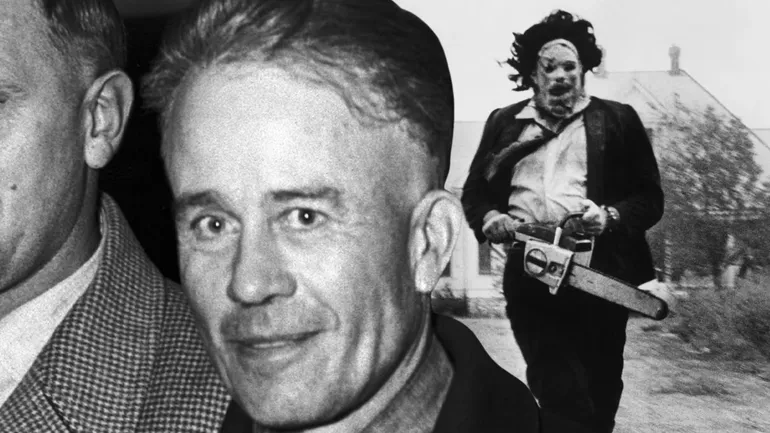
Alfred Hitchcock’s cult film “Psycho” features the serial killer Norman Bates, while the fictional characters Ezra Cobb in “Deranged” and Jame Gumb in the psychological thriller “The Silence of the Lambs” were also designed drawing inspiration from Ed Gein.
Early Life
Ed Gein was born on August 8, 1906. He was the youngest of two brothers; his elder brother Henry George Gein was born in 1902. Gein’s father frequently abused his mother and was an alcoholic.
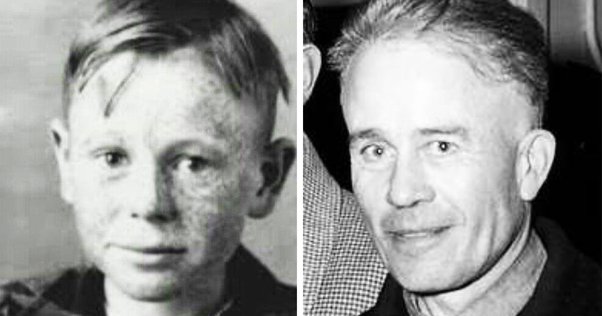
Gein adored his mother and was devoted to pleasing his authoritarian mother, Augusta, who believed her children would end up failures and alcoholics like their father. Gein’s beloved mother, Augusta, instilled in him a fanatic religiosity and the belief that all women, except herself, were sinful. According to Augusta, she was the only woman who was not a prostitute.
She insisted that he remain a virgin to stay faithful to her, preaching that sex was sinful and would lead to eternal damnation. Books on Ed Gein’s life and psychologists’ assessments indicate that from his childhood, Gein doubted his masculinity, instilled by his mother’s belief that men were weak. Influenced by his mother’s strength, Gein began to envision himself as a powerful woman like her.
Education and Working Life
Gein dropped out of school after eighth grade. He and his brother Henry began working full-time around the farm and continued their father’s trade as handymen. Ed also worked for a road construction contractor. His employers described him as odd but polite and reliable. In 1940, after their father George died of a heart attack at the age of 66, Ed and Henry increased their handyman work.
The Mysterious Death of Henry
Four years after their father’s death, Ed and Henry were burning brush on their farm when the fire got out of control. During this incident, Henry’s injured body was found with a head wound. His death was ruled an accident, and no autopsy was performed.
Mother’s Death and Transformation into a Serial Killer
Augusta Gein’s health was deteriorating. Ed devoted himself to caring for his mother. At the same time, he eagerly read books on grave robbing, shrinking heads, and human anatomy.
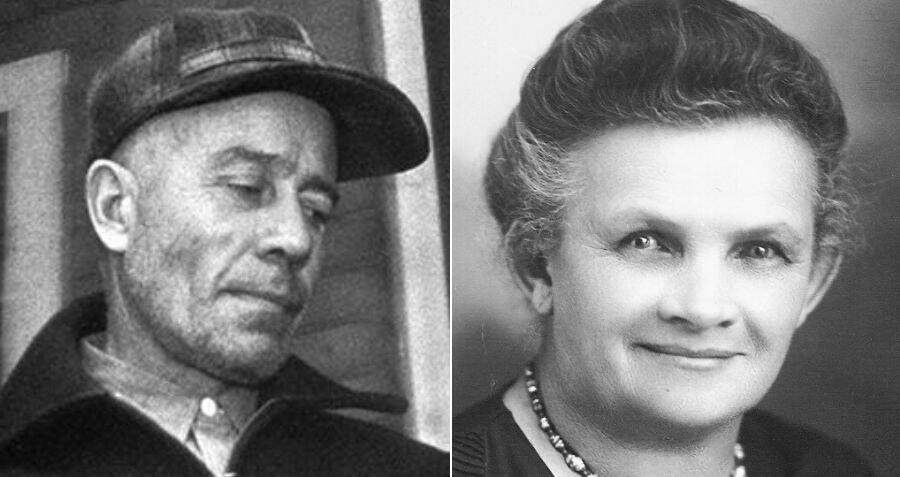
On December 29, 1945, 67-year-old Augusta Gein died of a stroke, and Ed began living alone, spending most of his time in his mother’s house. The death of his beloved mother marked the beginning of Ed Gein’s transformation into a serial killer. He first turned the meticulously maintained house into a museum of death.
Eighteen months after Augusta’s death, feeling extremely lonely, Gein’s visits to his mother’s grave increased. On one of these visits, he exhumed her body and took it home. At that time, at the age of 39, Ed transformed his bedroom and living room into a grave, burying his mother with a tombstone in the house.

From that point on, Gein began researching the obituaries of women around his mother’s age. He would visit cemeteries to exhume recently buried bodies. In 1951, Gein exhumed 51-year-old Eleanor Adams on the day she was buried and took her home. As time went on, foul odors began emanating from Gein’s home. A neighbor complained about the horrible smell coming from Gein’s property, but it was not investigated.
Discovery of Body Parts
In 1954, Gein committed his first murder, killing a woman named Mary Hogan in her own bar. Mary somewhat resembled Ed’s mother, which might have attracted his attention. Gein told the police he drank with her until the bar closed. When no one else was around, he drew the blinds, placed a .32 caliber Mauser pistol to her forehead, and shot her. He placed her body in his Ford truck and took her home. Later, in 1957, Gein was charged with killing another woman and keeping her body in his home.
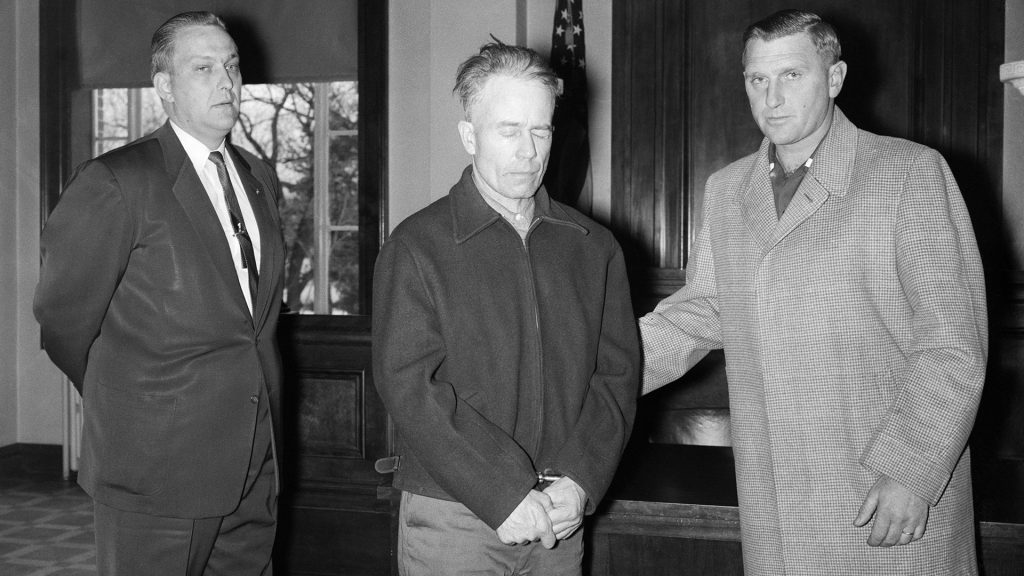
Gein was found and arrested. Initially, he refused to speak, but eventually confessed to killing Mary Hogan and Bernice Worden with a single bullet to the back of their heads. Before committing these murders, Gein would go to cemeteries to take parts from corpses, earning him the nickname “grave robber.”
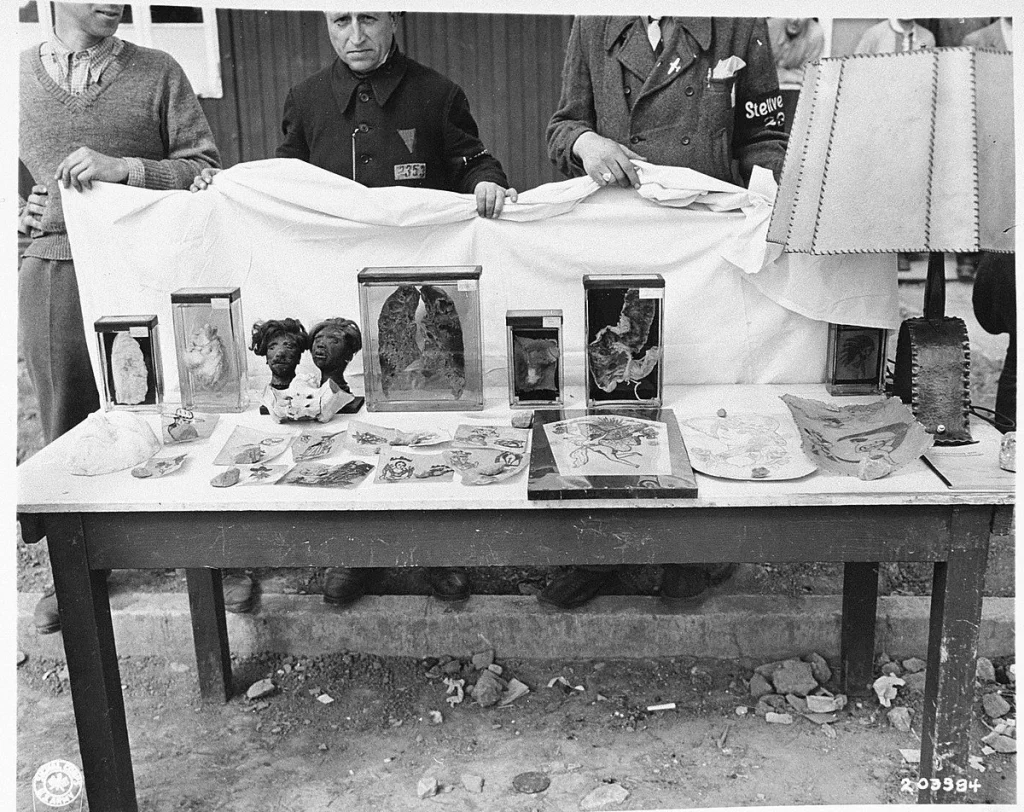
In his home, items made from human skin and human skeletons and bones were found. Among the horrifying objects Gein possessed were face masks made of human skin and a belt made of female nipples crafted from cutlery sets of arm bones.

Gein’s Research and Methods
Gein told investigators that he had visited three local cemeteries 40 times at night, where he would dress in women’s clothing and dance under the moonlight.
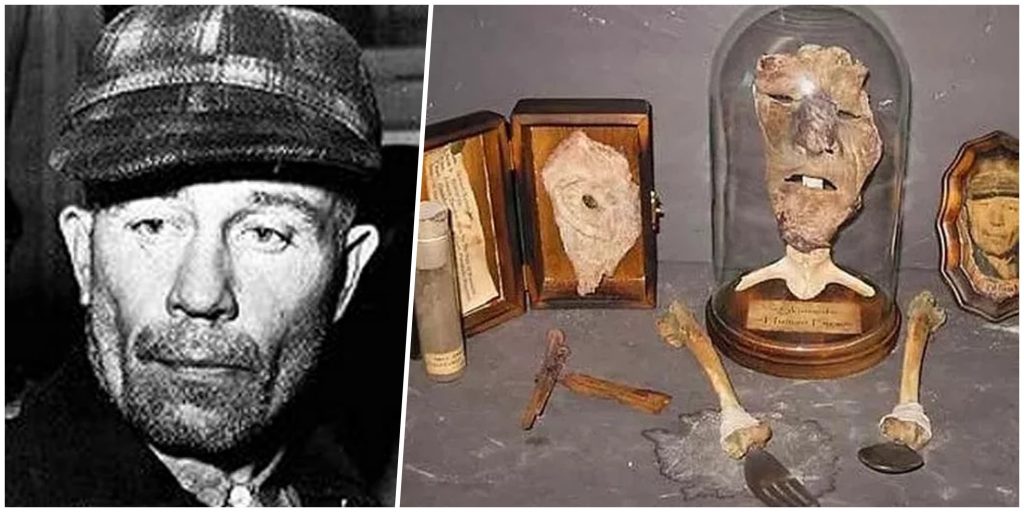
He also used castor oil to preserve the face masks and took corpses home to create gruesome artifacts.
The Case of Ed Gein
When Ed Gein’s trial finally began, the residents of Plainfield breathed a deep sigh of relief. His heinous murders had made national headlines, and people were eager to see justice served. Gein had confessed to killing two women, but the police suspected he had killed more. On November 22, although he would not be charged with murder until his mental health was assessed, he appeared before a judge. A psychologist and a psychiatrist interviewed Gein and diagnosed him as a “sexual psychopath” and schizophrenic. Dr. EF Schubert noted Gein had an “abnormally exaggerated attachment” to his mother.
The search continued at the cemetery on Gein’s farm. They discovered buried male bones and a gold tooth, along with the genitalia of young girls. In January 1958, Gein was legally declared insane and committed to a hospital 100 kilometers away. Thus, during his trial, he was found incompetent to stand trial and was sent to a mental hospital.
Gein spent the next 10 years in a mental hospital. Health staff reported he was benign but began having hallucinations around the full moon. In 1968, he was deemed fit to stand trial for the murder of Bernice Worden. Although he was found guilty at the trial, he was again declared innocent due to mental illness. The murders Gein committed were so ghastly that, a month after testifying in court, Sheriff Schley, only 43, died of a heart attack. The Sheriff’s family stated that the horror of the crimes Gein committed had traumatized him.
Gein’s Death
In 1978, at the age of 72, Gein was transferred to the Mendota Mental Health Institute in Madison, Wisconsin’s capital. He spent the remainder of his life in a mental health center and died at 78 in Mendota’s geriatric ward in 1984, due to lung cancer and subsequent heart failure. The next day, at 3 am on July 27, 1984, Gein was buried in a coffin in Plainfield Cemetery, among the remains of his brother and mother.
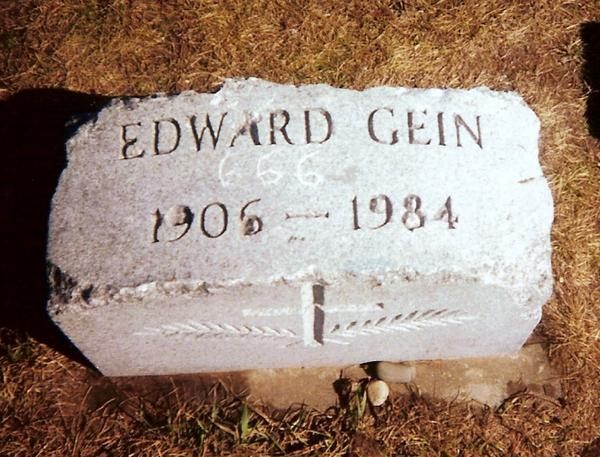
His gravestone was frequently vandalized and eventually stolen in 2000. Consequently, Gein’s story has inspired numerous horror films and will continue to inspire chilling movies in the years to come, never to be forgotten.
Discover the chilling depths of Dark Stories, where mysteries and true crime converge. Dive into tales of eerie paranormal phenomena and the sinister lives of serial killers, all designed to captivate and intrigue. Join us if you dare!
Visit our YouTube channel


